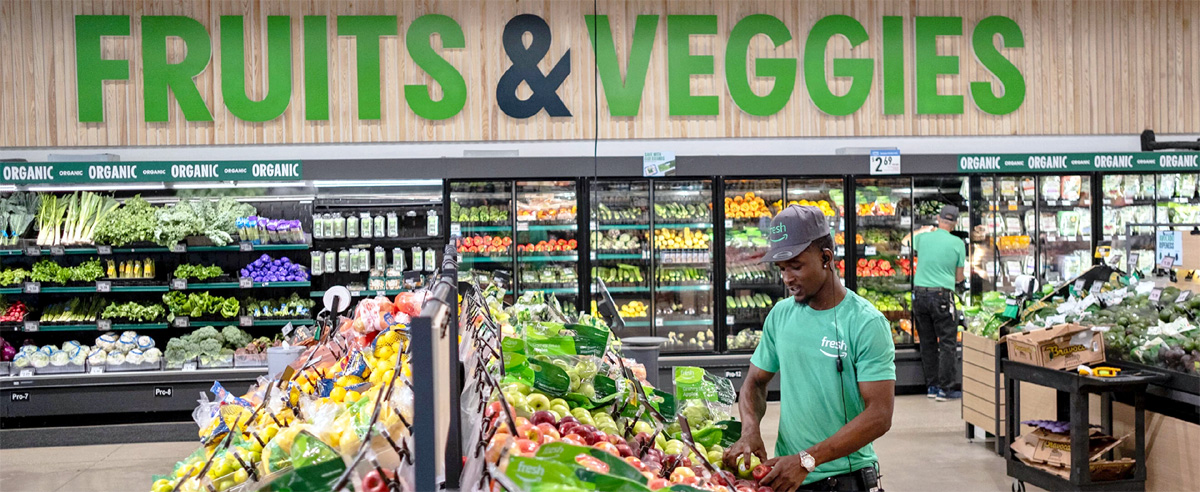Amazon has introduced a new grocery brand designed to compete directly in the low-price segment of the food retail market. The line, called Amazon Grocery, will encompass more than a thousand items, ranging from fresh produce and dairy to pantry staples, meat, and packaged snacks. The majority of products will be priced under five dollars, a clear signal that Amazon intends to be taken seriously as a low-cost provider rather than just a digital marketplace. The move places Amazon squarely in the same territory as Walmart, Aldi, and other discounters that dominate the price-sensitive end of the business.
For years, Amazon has circled around the grocery business, experimenting with Whole Foods, online delivery services, and private-label launches. Now the company is making its most direct move yet into the value grocery business which is one of the most competitive corners of the market.
The launch comes at a time when food inflation, even if moderating, has left deep scars on consumer habits. Shoppers are trading down, experimenting with store brands, and looking for ways to stretch their dollars further. For retailers, this environment has elevated private label from a secondary option into a primary growth engine. Amazon’s entry underscores just how mainstream this shift has become.
Where Amazon diverges from its competitors is in the delivery model. Walmart and Aldi rely heavily on physical stores, even as they expand online options. Amazon, by contrast, can deploy its vast fulfillment infrastructure and Prime ecosystem to deliver value groceries directly to consumers’ homes. If executed well, the combination of affordability and convenience could set a new benchmark for what shoppers expect from the discount segment.
The strategic implications for the broader industry are considerable. Established players in the value tier are unlikely to cede ground easily, but Amazon’s scale and willingness to invest in customer acquisition could force sharper price competition and thinner margins. At the same time, Amazon’s move validates private label as a growth category across all segments, pushing traditional grocers to rethink how they differentiate on quality, loyalty, and service.
Implications for the Industry
- Increased Price Pressure: Walmart, Aldi, and regional grocers could face intensified margin pressure if Amazon succeeds in setting new price reference points for key staples.
- Private-Label Normalization: Amazon’s entry into the <$5 tier reinforces the broader industry trend of private-label growth as consumers view these options as mainstream rather than secondary.
- Omnichannel Leverage: Unlike traditional value grocers, Amazon can integrate home delivery with its Prime ecosystem, potentially reshaping consumer expectations for convenience in the budget segment.
The signal is clear: Amazon is no longer testing the waters. It is declaring its intention to be a serious competitor in value groceries—a space where market share is hard fought and customer loyalty is often fleeting. The months ahead will reveal whether Amazon can convert its logistical strengths into sustained grocery share, or whether entrenched players can hold their ground. Either way, the battle for the value-conscious consumer just got more intense.

